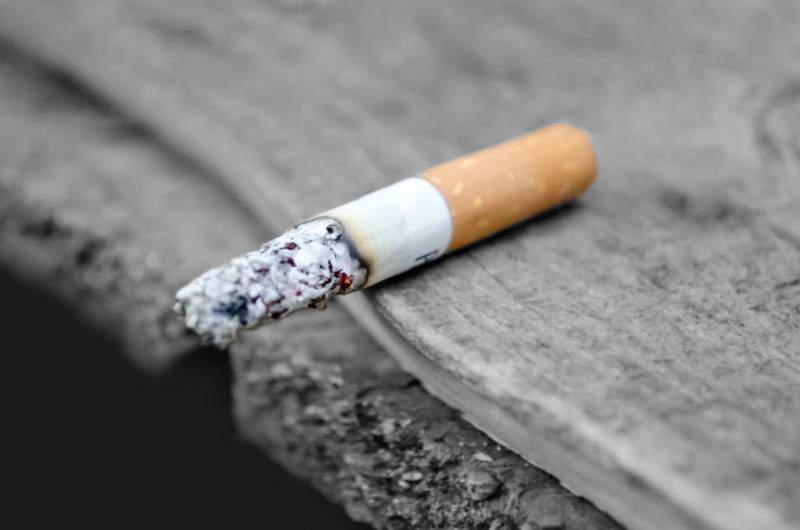India has the second largest number of tobacco users (275 million or 35% of all adults in India) in the world – of these at least 1 million die every year from tobacco related diseases. Tobacco-use imposes enormous health and economic costs on the country.
There is certainly an overarching consensus that goods that are harmful to society categorized as “sin” such as tobacco be taxed at the highest rate under GST as recommended in the Chief Economic Advisor report which seeks a 40% GST sin rate on all tobacco products including cigarettes, bidis and chewing tobacco. The GST council meeting that concluded on October 20th proposed a much lower 26% GST sin rate which would have significant impact on the revenue as well as the health of our nation, both of which require serious consideration.
According to Dr. Rijo John, Assistant Professor, IIT Jodhpur, “Compared to a GST Sin rate of 40%, imposing a 26% Sin rate would reduce total tobacco tax revenue by almost one fifth (17%, or roughly Rs.10, 510 crores) even if the government retains the current excise on tobacco products post GST. Clearly, 26% Sin rate will be well below the rate required to maintain a revenue neutral position for tobacco and will significantly reduce tax burden on ALL tobacco products since the existing average VAT rates themselves are higher than 26% on most tobacco products.”
Tobacco-use imposes enormous health and economic costs on the country. The total direct and indirect cost of diseases attributable to tobacco use was a staggering Rupees 1.04 lakh crore ($17 billion) in 2011 or 1.16% of India’s GDP.
“A much lower GST rate would make all tobacco products even more affordable to youth and other vulnerable populations, leading to the impact of the tobacco epidemic becoming more severe driving up health care costs and resulting in productivity losses. This will certainly lead to an increased number of fatalities per year, which is not a good news for any country. I firmly believe & urge that the government should tax the tobacco products at very high rate to ensure it discourages mass consumption” Dr. Pankaj Chaturvedi, Oncologist, Tata Memorial Hospital, Mumbai.
Approximately 48 percent of men and 20 percent of women consume tobacco (35 percent of the adult population overall) – of these at least 10 lakh are dying each year from tobacco related diseases. Bidis comprise 48 percent of the tobacco market, chewing tobacco 38 percent and cigarettes 14 percent so it is evident that bidis account for a significant portion of those deaths.
According to, Bhavna Mukhopadhyay, CEO, Voluntary Health Association of India (VHAI) “The current tobacco tax differentiates significantly between various forms of tobacco products (such as bidis, smokeless tobacco and cigarettes). Continuing to sell cheap, virtually tax-exempt bidis to the underprivileged, even in the new GST system, will ensure that the poor continue to be trapped in vicious cycle of poverty and ill health, exacerbated by affordability and addiction which causes them to spend more on tobacco and less on food, healthcare and education. We would urge the central and state governments to tax all forms of tobacco including bidis at the highest tax rates under GST regime, to insulate the population from its ill effects.”
According to, Ashim Sanyal, COO, Consumer VOICE “With 85% of smoked tobacco being consumed as Bidis, a large percentage of the 10 lakh tobacco related deaths occur because of bidi use. Therefore, treating bidis under the highest category for sin products to attract maximum tax would not only save the lives of lakhs of poor Indians but would also help reduce the overwhelming health disparities between various strata of society. The government should treat such issues on a priority basis & ensure that there is no distinction made amongst all forms of tobacco and are taxed at highest possible rates so as to keep our most vulnerable populations away from falling prey to it.”
“I lost my husband at a young age due to tobacco. I am suffering because of a wrong ‘personal choice’ made by him. I and my two daughters were not only pained emotionally but devastated financially. How can even anyone think of giving any kind of subsidy to this factory of widows and orphans? Government should not be seen supporting an industry that destroys 10 lac families each year for amassing vulgar profits.” Mrs. Sumitra Pednekar, wife of Maharashtra’s former home and labour minister Satish Pednekar , who died of oral cancer.
Based on current scenarios under consideration, a 40% Sin rate combined with the existing excise tax and top-up state rights to tax tobacco appears to be the best scenario for public health and revenue. This will not only help us maintain the current tax burden on tobacco, and will prevent more Indians from falling prey to life-threatening diseases and caught in a cycle of perpetual poverty!










Discussion about this post